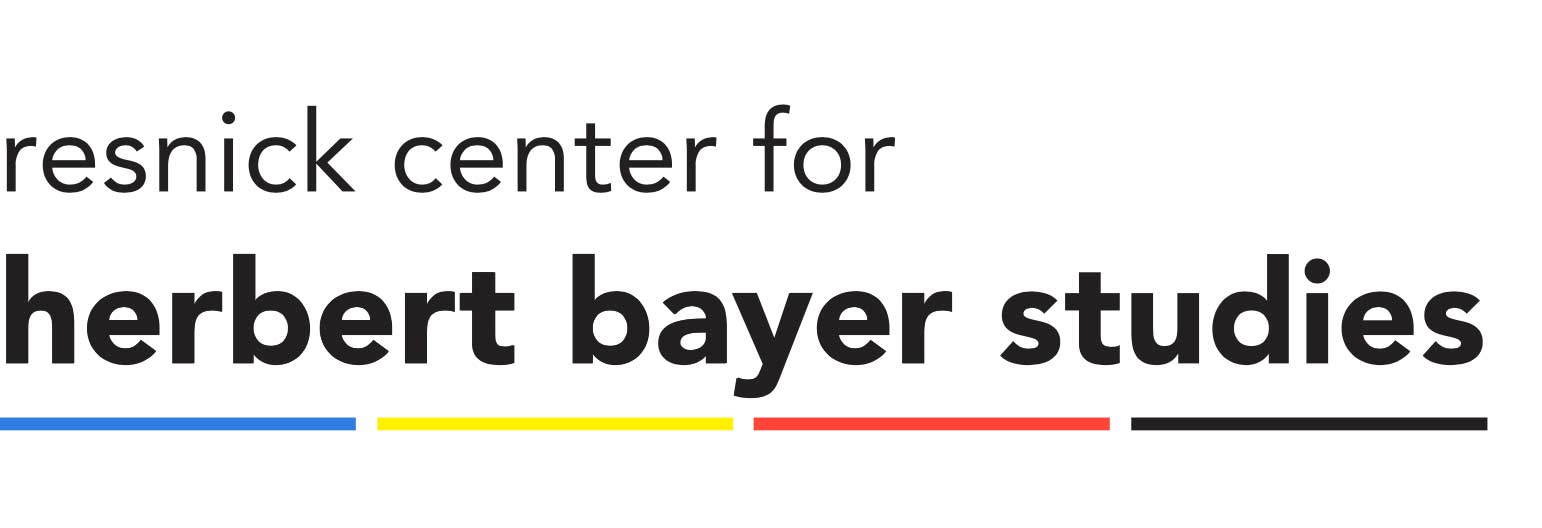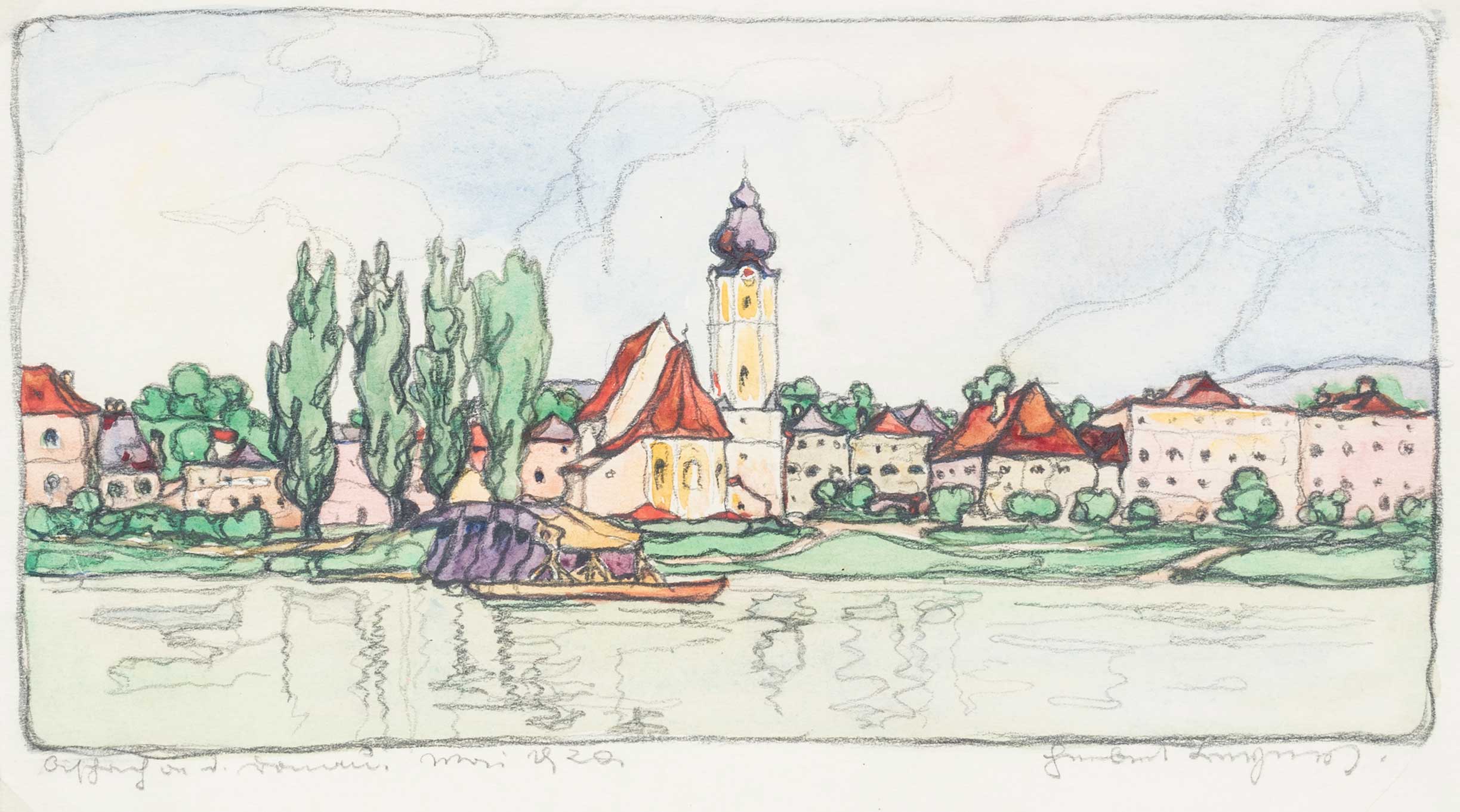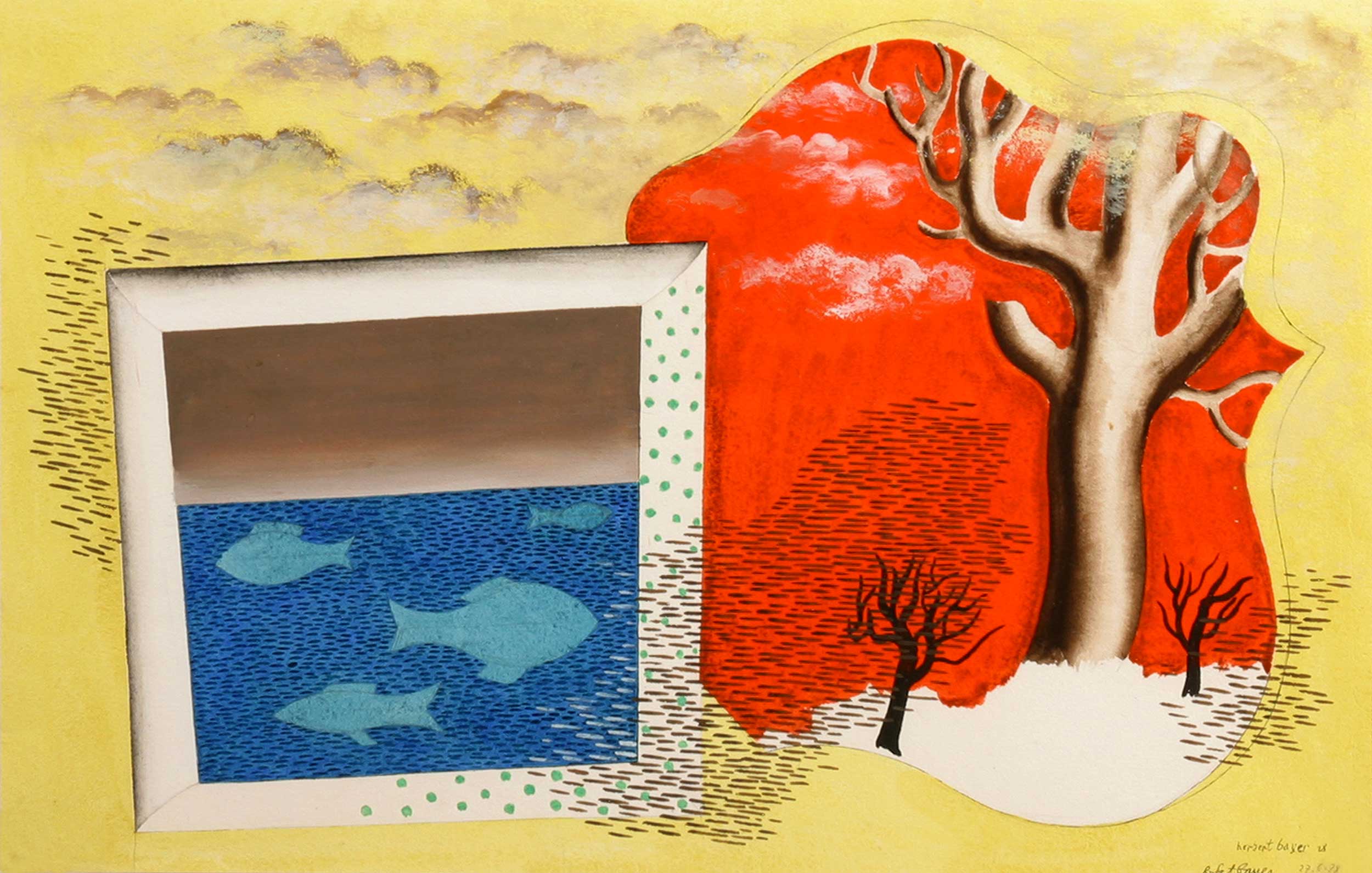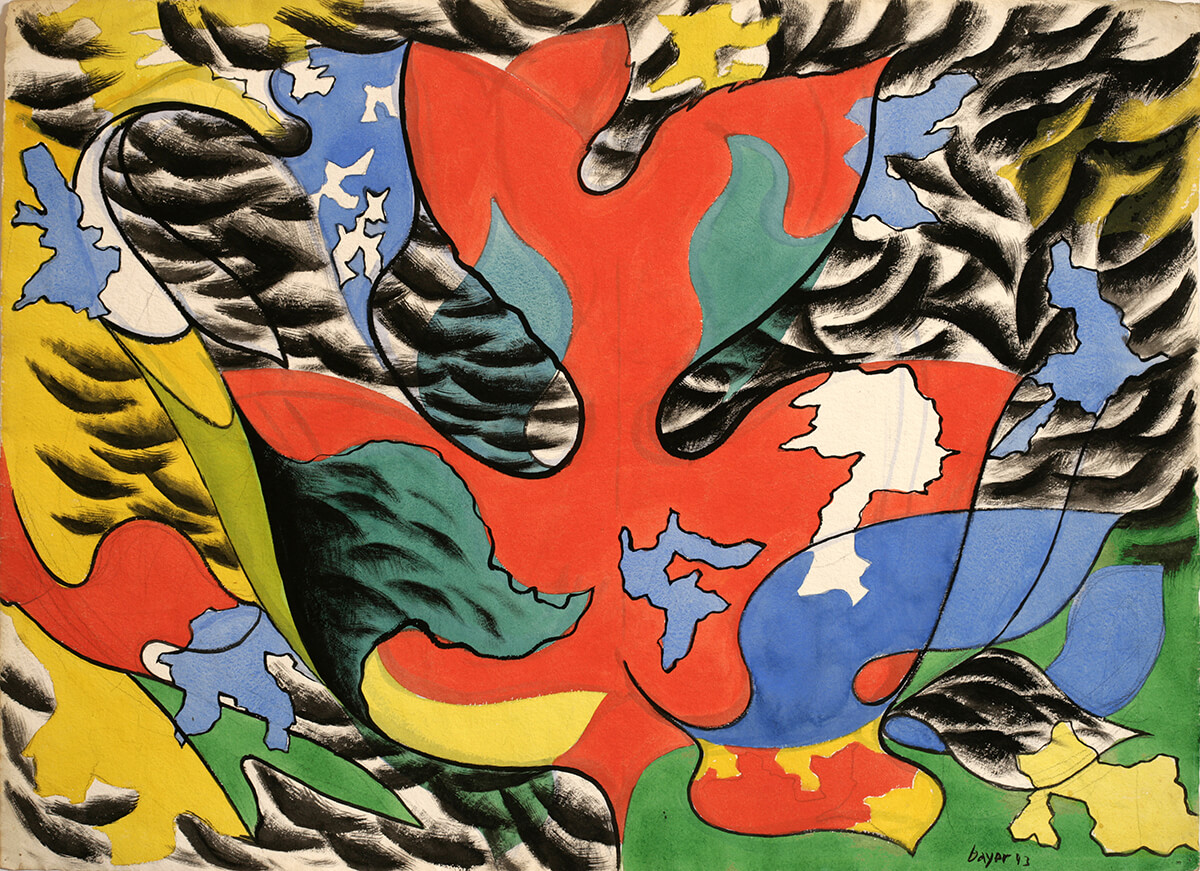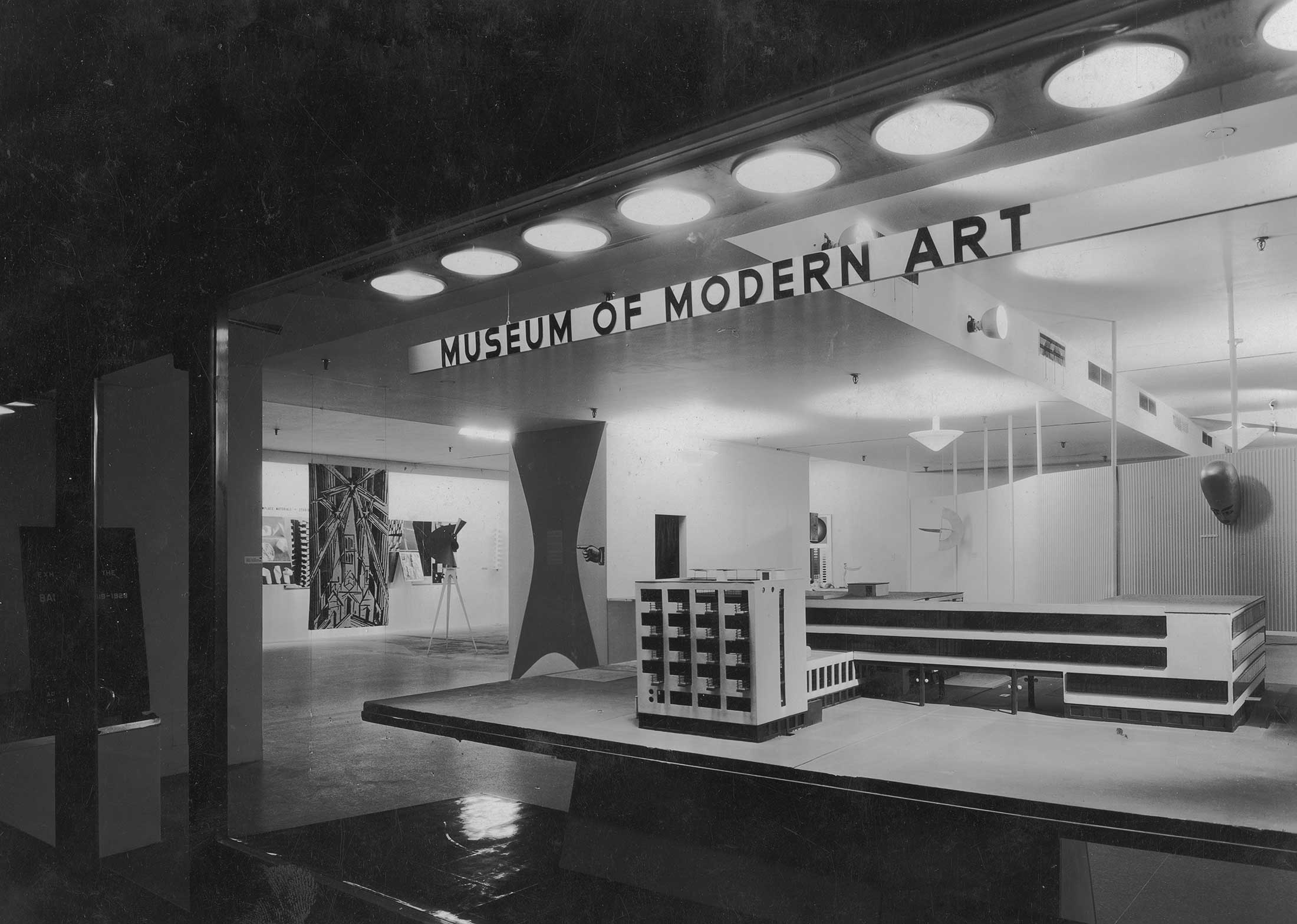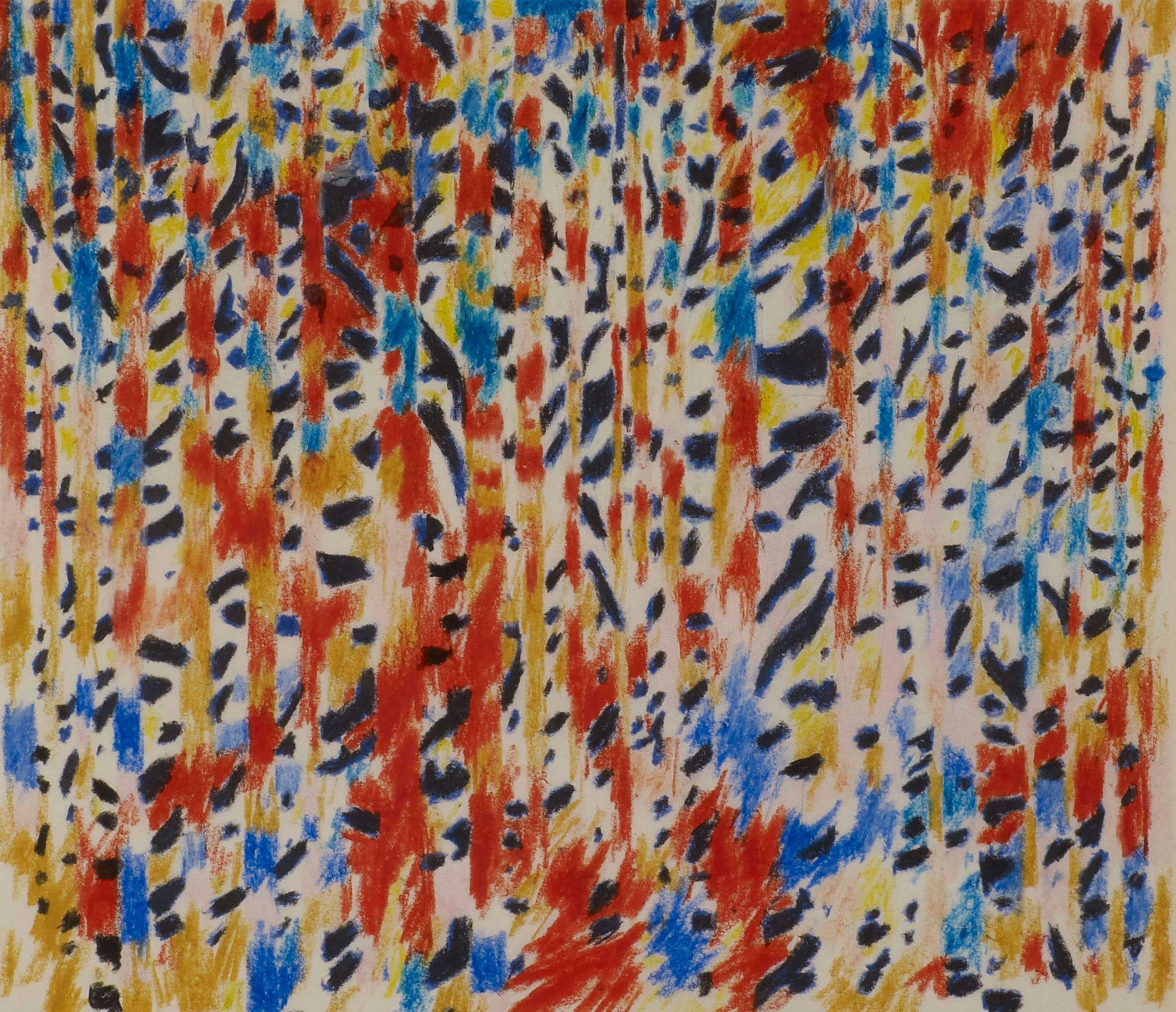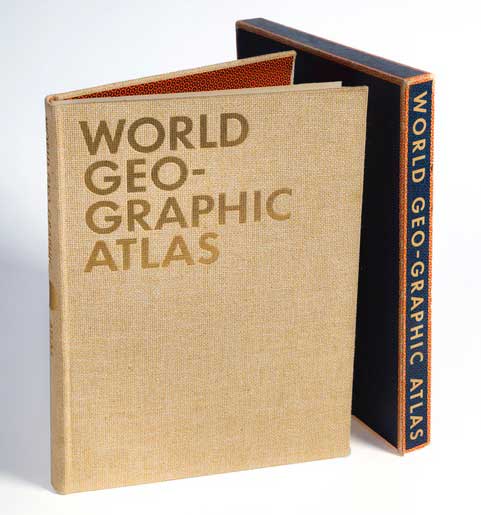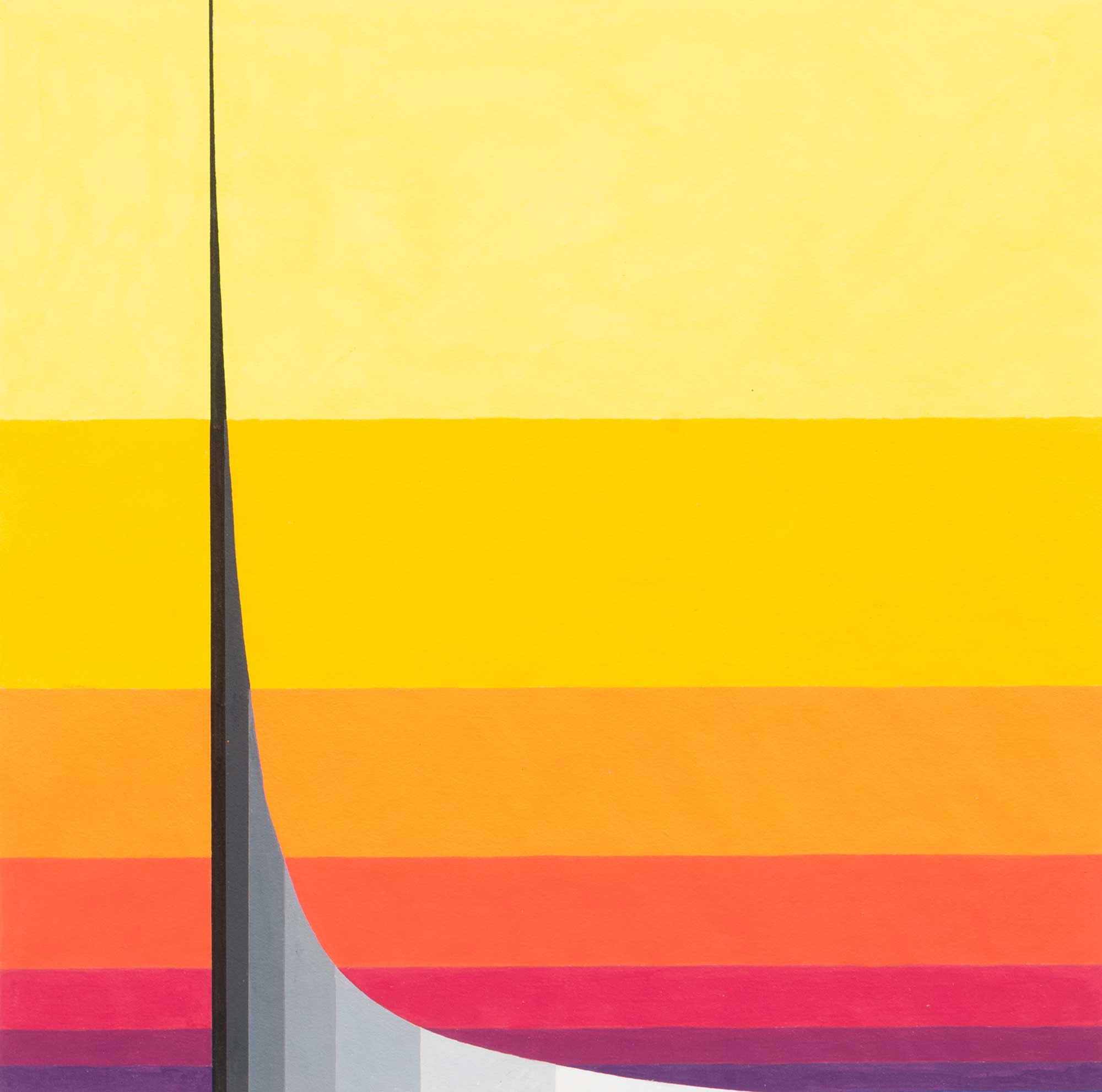Herbert Bayer Timeline
1913 – 1921
Early Years
Bayer began to draw when he was a child. His subjects include views of villages he saw during hikes in the mountains. Self-taught, he had the opportunity after serving in World War I to apprentice with architect-designers in Linz and Darmstadt. Throughout this period, his style evolved from one based in romantic realism to one influenced by the Viennese Secessionist school.
1921 – 1928
Bauhaus
In 1919, Walter Gropius established the Bauhaus, a school in Weimar. Bayer was accepted in October 1921. While there he met and studied with some of the most important and innovative artists, such as Wassily Kandinsky, Paul Klee, and László Moholy-Nagy. Although he was enrolled in the mural painting workshop, he quickly developed an interest in typography. He went on to become a young master at the school when it relocated to Dessau in 1925. He created many innovative works including the universal font that was adopted as the Bauhaus’s official typeface.
1928 – 1938
Berlin
Bayer left the Bauhaus in June 1928 and spent the summer in the South of France where he created some of his most inspired early paintings. Upon his arrival in Berlin that fall, he became design director of the Dorland International Studio and immersed himself in design work for the next ten years. Experimentation, such as using the photomontage technique, permeated his work during this period. Bayer made time to paint, especially when he traveled outside Berlin. Contemporary art trends, particularly Surrealism, influenced the work he painted during these years.
Although Bayer experienced creative and financial success in Berlin, he became progressively unhappy as both political and creative tensions arose around him. During a brief visit to the United States in 1937, he met with former Bauhaus colleagues who offered him various employment opportunities. After returning to Berlin to get his affairs in order, he moved to New York in August 1938.
1938 – 1946
New York
Upon his arrival in New York, Bayer designed the exhibition Bauhaus 1919 – 1928 and its accompanying catalog for the Museum of Modern Art. This led to further commissions establishing his reputation as an inventive graphic and exhibition designer. However, constant news of impending war was unsettling and affected him deeply. The paintings he created during these early years in New York reflect the somber and horrific events occurring in Europe. As the war raged, Bayer found solace in his design projects. His paintings explored some of the themes he was presenting in his design work, such as air travel and advances in science. The topography of Stowe, Vermont, where he spent the winter of 1944 skiing, would be the impetus for one of his great bodies of work, “Mountains and Convolutions.”
His circle of friends in New York grew, and he met Joella Haweis Levy, who would divorce her husband, Julien Levy, and marry Bayer in 1944. The following year he met Walter Paepcke, president of the Container Corporation of America, who would become a lifelong friend and patron. This relationship would lead to Bayer’s move from New York to Aspen in 1946.
1946 – 1974
Aspen
To secure Bayer’s commitment to staying in Aspen, Paepcke offered him two paid positions: art director and designer to the newly formed Aspen Skiing Company and art consultant to the Container Corporation of America. Bayer accepted and spent the next thirty years creating some of his most significant work. He devised an advertising campaign to lure visitors to Aspen, a neglected silver mining town that was becoming a leisure and cultural destination. His most enduring design from this period was the aspen leaf logo which is still part of many establishments’ identity. The creation of the Aspen Institute for Humanistic Studies in 1950 would occupy Bayer for the next two decades; he designed every part, from the buildings to the graphics to the environmental sculptures on the forty-acre campus. He also designed, in 1953, the World Geo-Graphic Atlas for the Container Corporation of America. After retiring from CCA, Bayer was hired in 1966 by Robert O. Anderson to head all design programs for the Atlantic Richfield Company (ARCO). He would occupy this position for the rest of his life.
Although his design projects kept Bayer extremely busy, he made time to draw and paint regularly, creating an impressive body of work. He concluded the “Mountains and Convolutions” series, in which he explored the forces of time on the changing topography of the earth. These paintings are among the most daring and inventive landscapes. During a sojourn in Sicily in 1954, he was inspired by the movement of palm fronds and the shadows cast on a wall and began the “Linear Structure” series that would occupy him for many years. After a visit to Japan in the early 1960s, images of the moon and other celestial bodies would be added to these structures. By the mid-1960s, Bayer embarked on a new body of work he titled “Chromatic Progression.” This monumental series would constitute most of his output until 1974.
During this period, Bayer also received commissions for large-scale outdoor sculpture, including Articulated Wall, a sixty-foot-tall structure created for the 1968 Summer Olympics in Mexico City, and, in 1973, Double Ascension for ARCO plaza in downtown Los Angeles. In the same year, he completed Anderson Park, one of the most ambitious earthworks on the campus of the Aspen Institute. In 1974, Bayer suffered a succession of heart attacks that necessitated his move from Aspen to the coastal town of Montecito, California, near Santa Barbara.
1975 – 1985
Montecito
After relocating to Montecito, Bayer began a series of works that would ultimately express the essence of his artistic life. He chose the title “Anthology,” a collection of work, more specifically a compilation of fragments, images, letters, numbers, geometric forms, and shapes. Instead of merely quoting his earlier work, Bayer created new settings in which various elements, both old and new, could coexist. The resulting works offered mysterious and poetic expanses in which philosophical ideas, mathematical systems, and conceptual theories take the viewer on a journey of exploration. Bayer created hundreds of “Anthology” paintings on both paper and canvas, ranging from a few inches to mural size. Whether one considers Bayer’s “Anthology” paintings a summation of his life’s work or another phase in his artistic journey, the works from this period stand out in the overall context of Bayer’s output. They are rich in personal meaning and lush in their execution.
- Aschach, 1920, Watercolor and graphite on paper, Gift of Javan and Britt Bayer
- Segesta, 1924, Oil on burlap, Collection of Lynda and Stewart Resnick
- Südlich, 1928, Gouache on paper, Collection of Lynda and Stewart Resnick
- Red Leaf in Wind, 1943, Watercolor on paper, Collection of Lynda and Stewart Resnick
- Digital Image © The Museum of Modern Art/Licensed by SCALA / Art Resource, NY5
- Untitled (trees-purplish), 1957, Oil crayon on rice paper
- Herbert Bayer, World Geo-Graphic Atlas: A Composite of Man’s Environment (Chicago: Container Corporation of America, 1953) © 2024 Artists Rights Society (ARS), New York / VG Bild-Kunst, Bonn
- Curve from Two Progressions (Sketch for 1973/68), 1973, Acrylic on paper, Gift of Javan and Britt Bayer
- Anderson Park, Aspen Meadows Campus (photo: Dan Bayer, 1997)
- Geometry of an Illusionist, 1978, Acrylic and pencil on canvas, Gift of Ron and Jan Greenberg
